Galesburg, Illinois
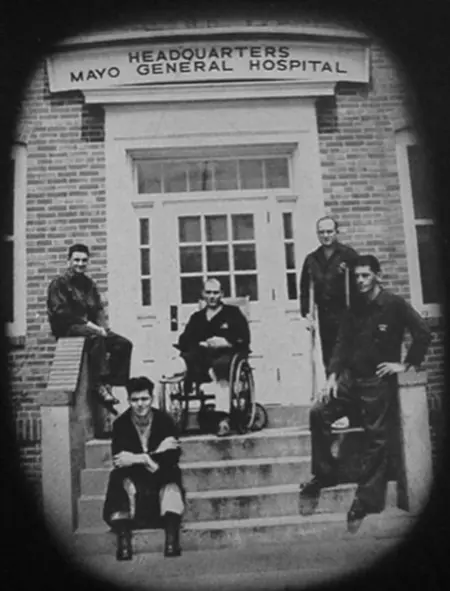
History
Mayo Army General Hospital was hastily built during WWII to serve our brave fighting men. Americas greatest generation built the hospital well. After the war, the buildings continued to serve the Galesburg Research Hospital and now as the Hawthorne Center the buildings go on serving business and community.
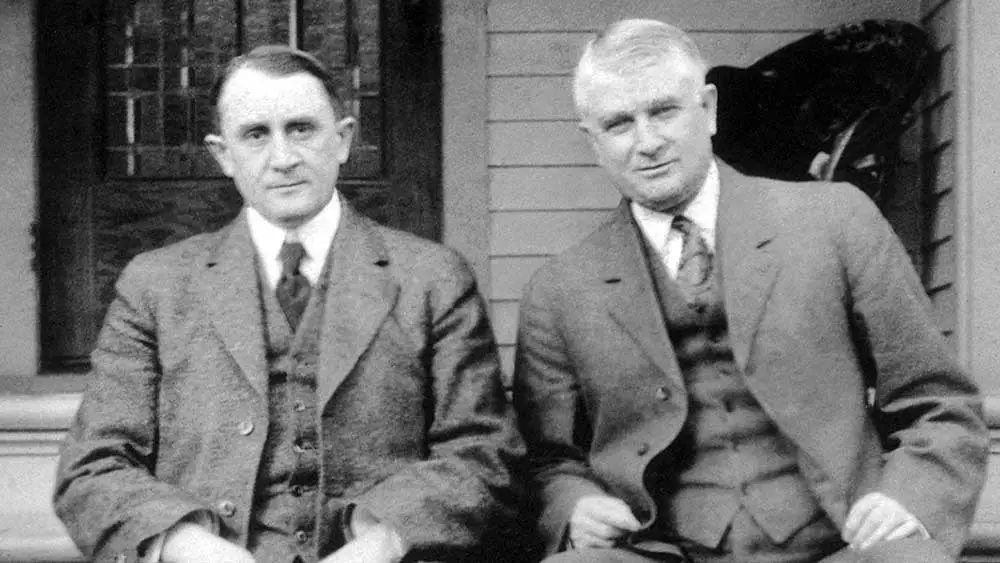
Mayo General Hospital is named in honor of Generals Charles and William Mayo, founders of the Mayo Clinic, Rochester, MN. Both men served in the Medical Department of the Army in WWI alternating as chief consultants in the surgical service. For their outstanding contributions, they were awarded the Distinguished Service Medal.
Mayo General Hospital is situated at the northern edge of Galesburg, Illinois approx one and a half miles from Galesburg's Main St. at a cost of 5 million 1940's dollars. In 1945, it was one of 63 U.S. Army General Hospitals. Political and Military Leaders worried that a long protracted war would make it necessary to not only treat our injured soldiers but re-condition them for re-entry into the war effort.
Respected Democrats Ralph Hawthorne and Fred Windish went to Washington, and along with Democrat Illinois Senator Scott Lucas landed the Hospital for Galesburg. Another plus was the Railroad running next to the hospital a spur was created in order for railcars to offload the wounded directly into the Hospital.
It was also noted that Santa Fe Special Representative, J.P. Reinhold was instrumental in Galesburg getting the hospital in Galesburg. Construction began in April of 1943 and in less than 9 months the Hospital was in business. Local residents were begged to rent rooms to those building and working at Mayo. Residents did step up and even remodeled their attics for the purpose. During construction, Army Officers worked out of Berry Motor's, 52 N. Kellogg St.
POW duties at Mayo included cleaning, grounds keeping, maintenance, laundry, and kitchen work. Under U.S.Army Guidance, the German P.O.W.s planted over 900 trees! Elms, Sugar Maple, Maple, Oak, Ash, Linden, and Evergreens that grow on the grounds today are compliments of German P.O.W. Labor.
The hospital was large and had enough facilities required for everyday living. Often Called a City within a City, Mayo consisted of 117 red brick buildings connected by over one and a half miles of corridors and covered 155 acres. It had the capacity of 2,350 beds (Peak bed occupancy reported at 3,000!) The facility had a large gym, theater, and swimming pool measuring 42 X 100 Ft. In addition, there was a victory garden,softball, and athletic fields.

Other facilites were: Post Exchange, Tailor Shop, Beauty and Barber Shops, Library, Telegraph Office, Post Office, Laundry and Dry Cleaning. X-Ray facility, laboratories, physical and occupational therapy.
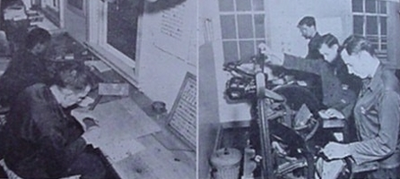
Those patients spent many hours enjoying the pleasures of a pass in Galesburg and beyond. Mayo was designated by the War Department as a center for Neurosurgery and Peripheral Vascular diseases. Approx. 19,000 Soldiers were treated at Mayo General.
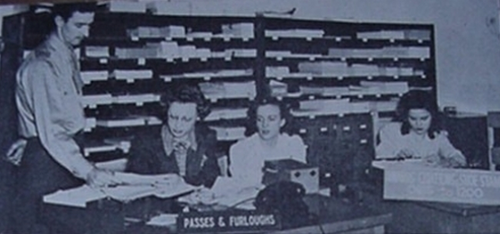
It was also a good facility for wheel chair bound patients as Mayo General is all on ground level. It was completely equipped with the most modern of medical aids and staffed with highly qualified professional and administrative personnel. A number of state-of-art clinics which included eye, ear, nose, throat, dental, and X-ray.
The Red Cross was a Key Player at the Mayo Hospital. They provided: furniture, recreation equip., Outdoor furniture, specialized wheel chairs, bikes, and much much more. The CB&Q RR Employees also furnished a number of Mayo Rooms with their donations. Another big donation to the Hospital was from The Womens Defense Corps.
Units/commands
- 3613th Service Command Unit
- 3613th Service Command Unit/WAC Detachment
- 345th ASF Band
- 110th WAC Hospital Company
- 57th WAC Hospital Company
- 79th Field Hospital
- 1613th Service Command Unit/Prisoner of War Camp/Detachment No. 5 (POW Camp was a detachment from Camp Ellis, Illinois POW Camp)
Timeline
- August 1943
- Colonel Krafft arrives from a Military Hospital in New Mexico where he was Commanding Officer
- November 17, 1943
- 1st Meal Served and 1st night for soldiers to sleep in barracks
- November 27, 1943
- Flag Raised over Mayo Genreal Hospital. Contingent of Officers from Camp Ellis, Illinois Present
- February 26, 1944
- The first patients arrived. 31 Soldiers arrive via train onto the special Hospital platform. One of these soldiers was a Galesburg native, Sgt. Clifford Hosier, who had resided on Brooks St. in Galesburg. This was a dress rehearsal for hospital trains that would be arriving from both coasts.
- February 1944
- Chapel Dedicated.
The chapel served Catholic, Protestant, and Jewish Soldiers. - July 10, 1944
- Dedication of Mayo General Hospital. U.S. Army Band from Camp Ellis provided music (Camp Ellis was a sprawling Army Training Base approx. 49 Miles to the South of Galesburg. Colonel Krafft expressed his gratitude to the Army Corps of Engineers. Over 1,500 people attended the dedication with key Military and Politicians in attendance. Letters were read from the wives of the Deceased Mayo Brothers. They wished the new facility well and were honored for the naming of the Hospital in the Brothers honor.
- April 10, 1945
- German Prisoners of War Arrive. The Camp was a branch of the Camp Ellis Prisoner of War Camp. 160 German POWs that were reportedly captured in the Africa Campaign The POWs were housed in the Northeast Corner in 4 wire-enclosed wooden barracks. The POW section also had a mess hall and recreation room. The Prisoners were to be used to supplement labor for Mayo General, but were also available to work at other jobs and farming if proof was provided that the labor was not readily available elsewhere. The German prisoners were paid 80 cents a day in coupons that they could spend at the Mayo Canteen Anyone using POW labor had to pay the U.S. Government the going wage for their use.
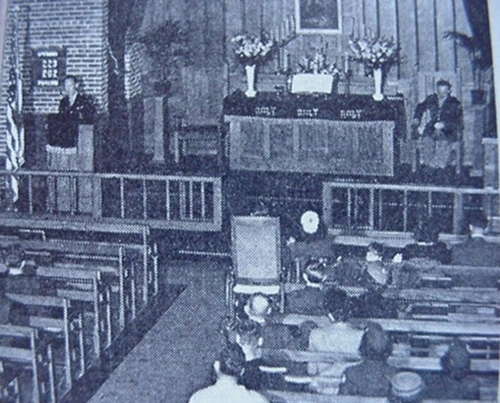
Employment
At it's peak, the hospital employed:
- 134 Officers
- 136 Nurses
- 165 WACs
- 686 Enlisted Men
- 19 Red Cross Workers
- 809 Civilian employees
- 2 state of the art surgical units
President Roosevelt Remarks
“It is not the critic who counts; not the man who points out how the strong man stumbles, or where the doer of deeds could have done them better. The credit belongs to the man who is actually in the arena, whose face is marred by dust and sweat and blood; who strives valiantly; who errs, and comes short again and again, because there is no effort without error and shortcoming; but who does actually strive to do the deeds; who knows the great enthusiasms, the great devotions; who spends himself in a worthy cause; who at the best knows in the end the triumph of high achievement, and who at the worst, if he fails, at least fails while daring greatly, so that his place shall never be with those cold and timid souls who know neither victory nor defeat.”
President Teddy Roosevelt
Photos
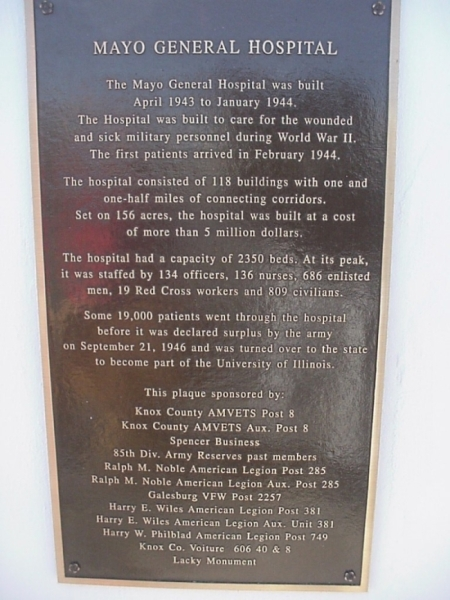
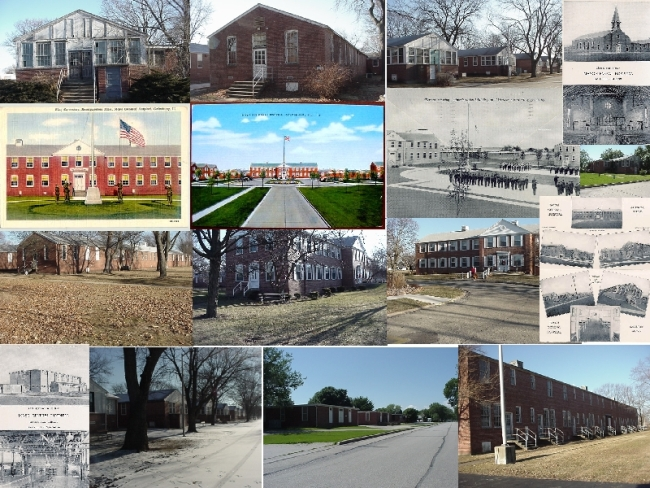

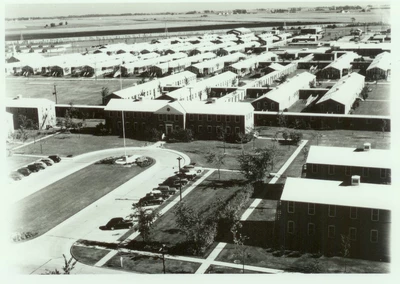



Mayo General Hospital postcard (note place for 1 cent stamp)
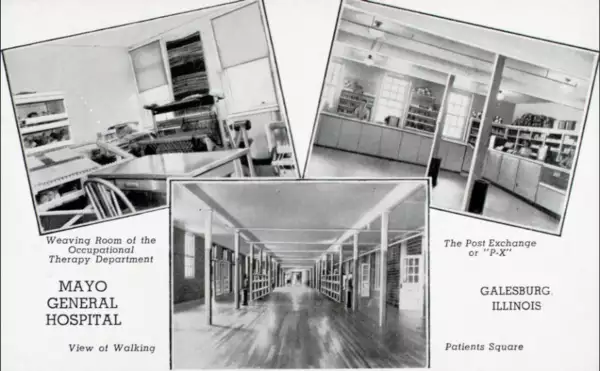
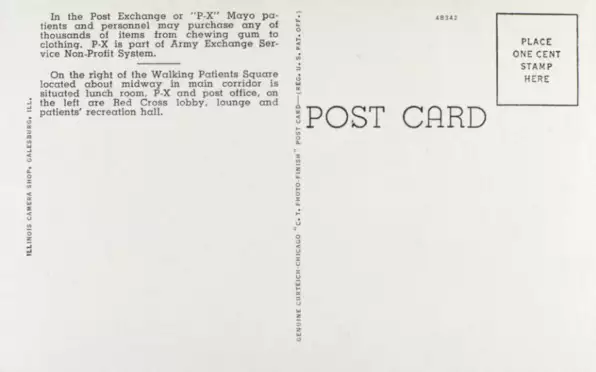
Map
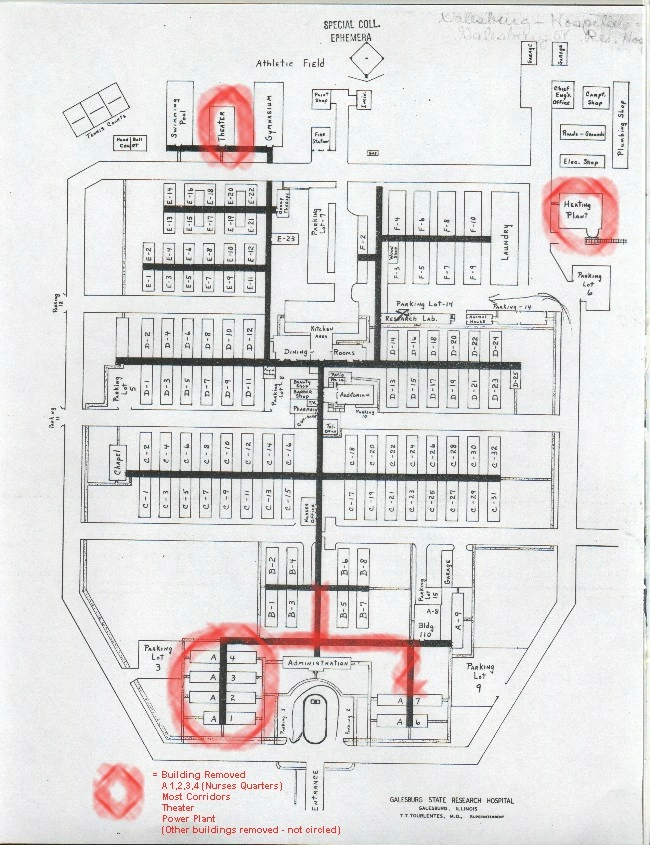
Colonel Henry L. Krafft
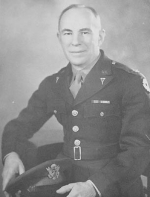
Colonel Krafft was posted to Mayo General Hospital in Galesburg, Illinois in August of 1943 as Commander of the Army Hospital Colonel Krafft was a highly respected and decorated leader He commanded the facility until it was nearly at its end.
Colonel Krafft was a graduate of the College of Physicians and Surgeons in Chicago, Illinois and in 1909 recieved his Medical Degree. He was an intern at Cook County Hospital, Chicago, Illinois Krafft joined the Army in 1916 as a First Lieutenant By the end of World War One, Krafft was a Major. He also served in the Panama and the Philippine Islands from 1931 to 1936.
Everything I have seen written about Col. Krafft is positive and he seems to have been well liked by Civilians and Military Personnel alike.
Colonel Krafft was presented the Legion of Merit in a ceremony at the Headquarters Building at Mayo General THE CITATION SAYS Colonel Henry L. Krafft, Medical Corps, Army of the United States as Commanding Officer, Mayo General Hospital, Galesburg, Illinois from August 1943 to December 1945, ably accomplished the necessary construction, alterations, and the re-organization to meet repeated demands for increased facilities without interupting the exacting care of patients. His sympathetic understanding and outstanding leadership were an inspiration to his professional staff and all personnel under his control. Headquarters Army Service Forces, Washington, D.C.
Colonel Krafft told the Galesburg Rotary Club in September 1943 that the Mayo Hospital would be one of the most modern Army Hospitals. He also stated that the buildings were built of brick and tile and should stand for many years. His words were prophetic.
In December of 1945 Colonel Krafft and his wife Esther retired to Carmel, California.
Colonel Krafft was replaced by Colonel John F. Blatt who had been commander of the 44th Evacuation Hospital in Europe. Col. Blatt closed down the facility and transfered ownership to the University of Illinois.
Badges

The badges from left to right are Medical Corps Badge, Nurse Medical Corps Badge, and Physical Therapy Medical Corps Badge.
Sources
- Church Of God In Christ
- Jim DeWille Contributor Mayo Newspaper
- Florence O. Johnson
- Galesburg Register-Mail Newspaper (Microfilm @ Library)
- Hawthorne Center
- Ray Seiple
- Verne Dowers (Papers-Galesburg Library)
- Knox County, Illinois Genealogy & History Website
- Music on Mayo Site Compliments of Camp White Site
- "Bub" Smith Merrill

Hosted by ALC Press.org




